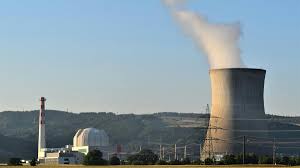- Courses
- GS Full Course 1 Year
- GS Full Course 2 Year
- GS Full Course 3 Year
- GS Full Course Till Selection
- Answer Alpha: Mains 2025 Mentorship
- MEP (Mains Enrichment Programme) Data, Facts
- Essay Target – 150+ Marks
- Online Program
- GS Recorded Course
- Polity
- Geography
- Economy
- Ancient, Medieval and Art & Culture AMAC
- Modern India, Post Independence & World History
- Environment
- Governance
- Science & Technology
- International Relations and Internal Security
- Disaster Management
- Ethics
- NCERT Current Affairs
- Indian Society and Social Issue
- NCERT- Science and Technology
- NCERT - Geography
- NCERT - Ancient History
- NCERT- World History
- NCERT Modern History
- CSAT
- 5 LAYERED ARJUNA Mentorship
- Public Administration Optional
- ABOUT US
- OUR TOPPERS
- TEST SERIES
- FREE STUDY MATERIAL
- VIDEOS
- CONTACT US
GENERATION OF HYDROGEN FROM SEAWATER USING SOLAR ENERGY
GENERATION OF HYDROGEN FROM SEAWATER USING SOLAR ENERGY
13-06-2023


Latest Context
In order to overcome the problems with the current Water Electrolyzer Technology, researchers from IIT-Madras have created an Alkaline Seawater Electrolyzer to Generate Hydrogen.
- Technology used in alkaline water electrolyzers employs fresh water, a costly oxide-polymer separator, and consumes a lot of energy. Each of these problems has been overcome by this technology, which has created easy-to-use, affordable substitutes that are very successful at splitting saltwater and producing hydrogen.
Key Features of the Invention
Carbon Based Support Catalyst:
- At the anode and cathode of an Alkaline Water electrolyzer, two processes take place. Water separates into H+ and hydroxide ions near the cathode. While the hydroxide ions flow through a separator and change into oxygen at the anode, the H+ ions transform into hydrogen.
- However, there are difficulties when using seawater. The anode produces hypochlorite, which interferes with the generation of oxygen and corrodes the electrode support material. Impurities that impede the generation of hydrogen accumulate on the cathode.
- The electrodes contain a unique support material covered with a catalyst to address these problems. A carbon-based substance is employed as opposed to metals that corrode in saltwater.
- The catalyst is coated on this support material, which is present in both the anode and cathode. The catalyst improves the simultaneous generation of hydrogen and oxygen.
Cellulose-Based Separator:
- In alkaline electrolysis, the anode and cathode are usually separated using a costly zirconium oxide-based material.
- However, a cellulose-based separator was employed by the researchers. This separator minimises hydrogen and oxygen crossing while allowing hydroxide ions to move from the cathode to the anode.
- When exposed to seawater, this separator is very unlikely to degrade. For durability and long-term performance, this is a crucial trait.
Significance of this Invention
- A greener and more sustainable future is made possible by this technology, which tackles the shortcomings of existing technologies and paves the path for scalable and sustainable hydrogen generation.
Why should green hydrogen be developed?
Decrease Greenhouse Gas Emissions:
- Green hydrogen's primary objective is to lower harmful greenhouse gas emissions, which are a significant contributor to climate change.
- Green hydrogen, which is created from renewable sources as opposed to conventional fuels, produces no greenhouse emissions, making it a sustainable and environmentally beneficial energy choice.
Energy Security and Independence:
- Countries may become more independent and less susceptible to price swings and supply interruptions associated with limited fossil fuels by converting to renewable energy sources like green hydrogen. This increases energy independence and security.
Decarbonizing Difficult-to-Decarbonize Sectors:
- Fossil fuels have a significant potential to be replaced by green hydrogen in hard-to-decarbonize industries like heavy manufacturing and aviation. Adopting green hydrogen can help these industries reduce their carbon footprint because they are major contributors to world emissions.
Technological Advancements:
- The development of green hydrogen technology stimulates innovation across a range of industries. New technologies, materials, and systems are needed to build the infrastructure needed to produce, store, and distribute green hydrogen. This encourages development and innovation in adjacent businesses.

Q1. Consider the following heavy industries: (2023)
- Fertilizer plants
- Oil refineries
- Steel plants
Green hydrogen is expected to play a significant role in decarbonizing how many of the above industries?
(a) Only one
(b) Only two
(c) All three
(d) None
Ans: (c)
Q2. With reference to green hydrogen, consider the following statements: (2023)
- It can be used directly as a fuel for internal combustion.
- It can be blended with natural gas and used as fuel for heat or power generation.
- It can be used in the hydrogen fuel cell to run vehicles.
How many of the above statements are correct?
(a) Only one
(b) Only two
(c) All three
(d) None
Ans: (c)



